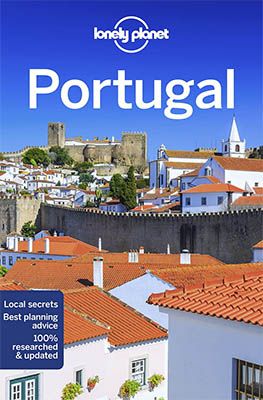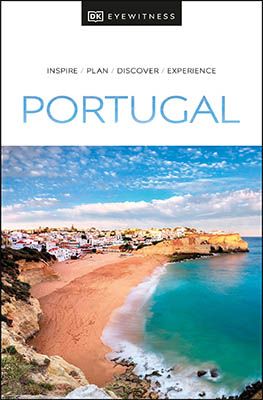In the north-east of the Alentejo is a particularly interesting protected area: the Parque Natural da Serra de São Mamede. It is a rough, mountainous area with sloping heathlands, rocky ridges and forests. But also with wild rivers, babbling brooks and lakes full of birds. There are no motorways, nor large cities. You will find narrow, winding country and mountain roads, some of which lead to fortified towns situated high up.
On the Spanish side of the border is the Sierra de San Pedro Natural Park. Together, the two natural parks form one of the largest protected areas in southern Iberia. The region is an important refuge for otters and the Iberian lynx, among others. But it is especially the (predatory) bird species that will appeal to the nature lover. Various species of eagles can be found. And both the black and the griffon vulture.
In addition to many mountain-bike trails, the park offers countless fantastic opportunities for short- and multi-day hikes. The gastronomy and culture lovers will find plenty to enjoy here, too. There are several picturesque fortified towns like Marvão, Alegrete and Castelo de Vide. Because of their location on the hillside or on the top of a mountain, they offer unprecedentedly beautiful and wide views. And do you want to regain your strength at the end of an active day in the open air? Both in the towns and in the farm villages you can enjoy the most delicious regional specialities.
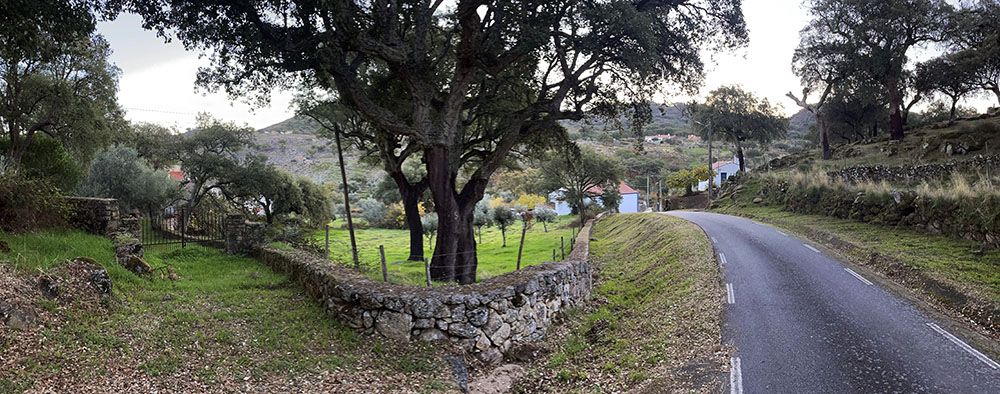
Galegos: our base in the natural park of Serra de São Mamede
In order to explore the nature park properly, we settle in base Galegos. The tiny hamlet is close to the Spanish border and fairly close to the fortified town of Marvão. Except for the olive harvest period, only a few dozen people live there. This was different before Portugal joined the EU: due to its location at the Spanish border, Galegos was then a busy smugglers’ den. Especially coffee found its way to Spain. But tobacco was also in great demand by the eastern neighbours.
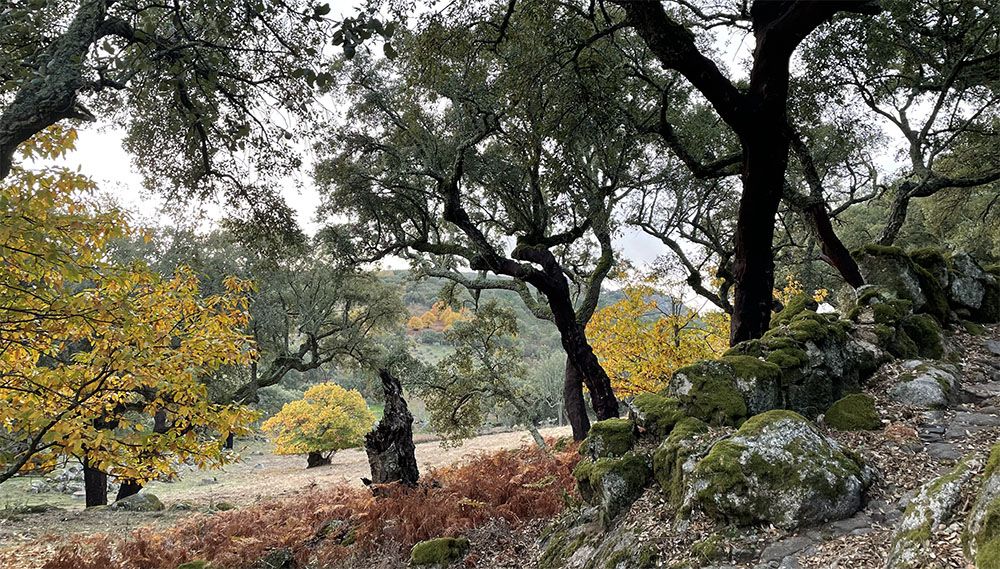
The olive oil museum of António Picado Nunes
.Today, there is little to do in the village itself. However, there is an olive oil museum that you should not miss! The museum is located at the front of the olive oil factory. António, the owner of the family business, learned the trade as a child from his grandfather. After a successful career in Lisbon, he moved back to his native region. He modernised the factory and turned the old factory into an interesting museum.
The tour will give you an idea of how olive oil is made in the past and how it is made today as well as what the different categories are and what the best moment for pressing is. In just half an hour, we have acquired the basic knowledge we need to put into practice: the olive oil tasting. This takes place in the cosy kitchen of the factory. Afterwards, we can call ourselves true connoisseurs of the now 6000-year-old foodstuff.
By now it is evening and it is cold outside. The fireplace is lit and a delicious meal is prepared for us. While enjoying the finest local wines, we chat for a long time. Not only about olive oil but also about life in this beautiful part of the Alentejo. And as the evening progresses, more and more people enter the kitchen. They are both employees of the factory and owners of olive groves who have their olives pressed here. How fantastic to get to know the Alentejan culture in this way!
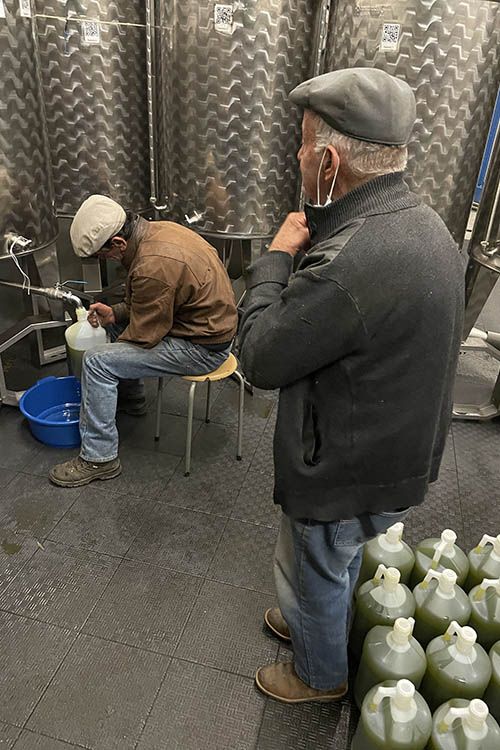
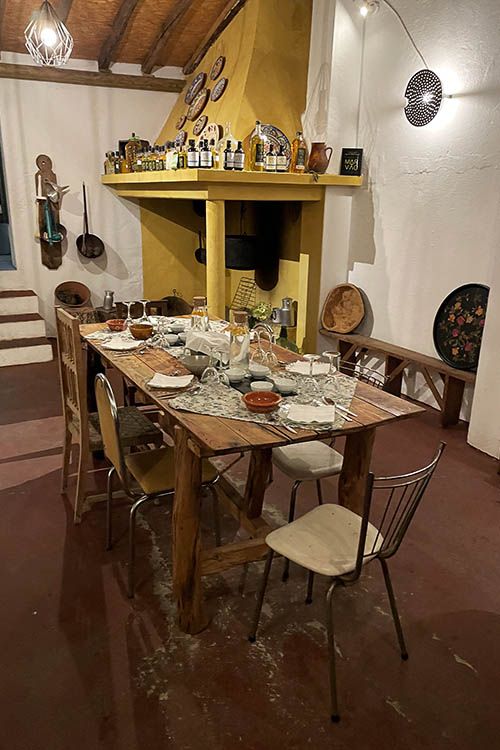
Hiking in the Serra de São Mamede
The large natural park Serra de São Mamede is ideal for the most beautiful hikes. One of those trips is the (internationally) known ‘smugglers’ route’. But there are also beautiful, multi-day hikes through the rugged landscape.
The smugglers’ route
From our base in Galegos starts the so-called smugglers’ route. Via this route, many Spanish smugglers used to sneak into Spain in the dead of night. We prefer the early morning on this second day in the nature park. Although it is now quite chilly in the mountains! With our mobile phone and the GPS route in our hands, we walk to the church of São Sebastião dos Galegos. Here is the starting point of our six-kilometre walk.
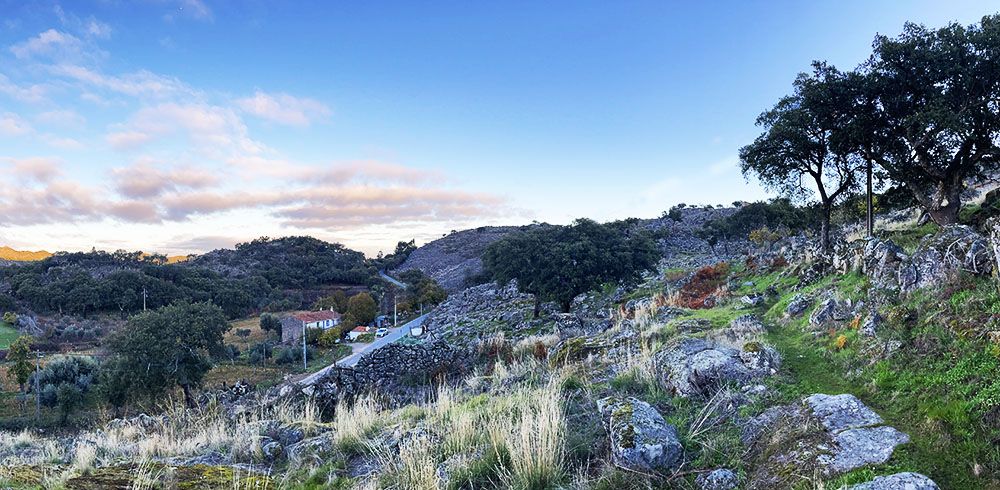
The first section leads along a wide, winding and hilly path to Monte de Baixo. On both sides of the path, we see nothing but cork oak orchards, interspersed with small fields. Even in the border town of Monte de Baixo, we don’t see anyone on the road. The only sound we hear everywhere is the tinkling of goat bells. Just outside the village, a narrow, winding path leads to the left and upwards. The climb is quite a struggle, but once at the top, we find a perfect place to rest. We ended up at an old, stone hut. This used to be the waiting place for smugglers just before they crossed the border.
A beautiful walk parallel to the border takes us via a medieval stone path to Pitaranha. Here, too, we have to climb and scramble a bit but the beautiful landscape makes up for a lot. The sun shines over an ever-increasing part of the rural surroundings. And in the distance, we can see the impressive fortress of Marvão on the hilltop. We also have a view of the Porto de Roque ridge: a narrow but long rocky ridge where griffon vultures can be found. At this early hour, we do not see them hovering. We do pass a goat pasture regularly. The bleating and the sound of the goat bells completes this walk through the countryside. Via the medieval bridge of Pomar Velho we arrive back in Galegos. We could not have wished for a better, early start to the day!
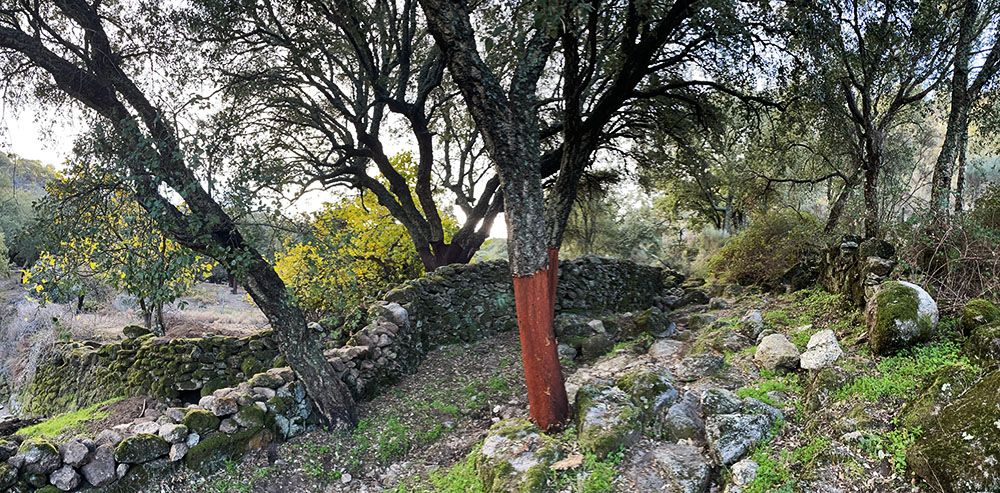
Other walks and multi-day hikes
There are many walks in the surrounding area. At your accommodation, they can help you with routes and tips for day trips and hikes of several days. A number of accommodations offer organised guided walks. Like Afonso, the younger brother of the owner of the olive oil factory. Via the website of Marvão Adventure he offers beautiful day walks.
From Galegos, you can also make walks of more than ten kilometres on your own. One of them is the almost 13-kilometre long Galegos Marvão. Until the Spanish border, the route is the same as the smugglers’ route. Then it continues to the north where you have an even better view of the Marvão fortress. The same goes for the Marvão PR (over 13 km) and the Galegos PR 2 (12 km). There is also the interesting ten-kilometre long International Smugglers’ Route. Almost half of the walk goes through Spain.
Another great day hike you can do in the area is at the Apartadura reservoir. The large lake is surrounded by green and rocky highlands. In the area, you will find many small villages along streams, fertile valleys and chestnut forests. The fortress of Marvão is also visible in the distance on the mountain top. The relatively easy walk is 8.5 kilometres long. Starting point is on the right bank of the lake, about nine kilometres west of Galegos.
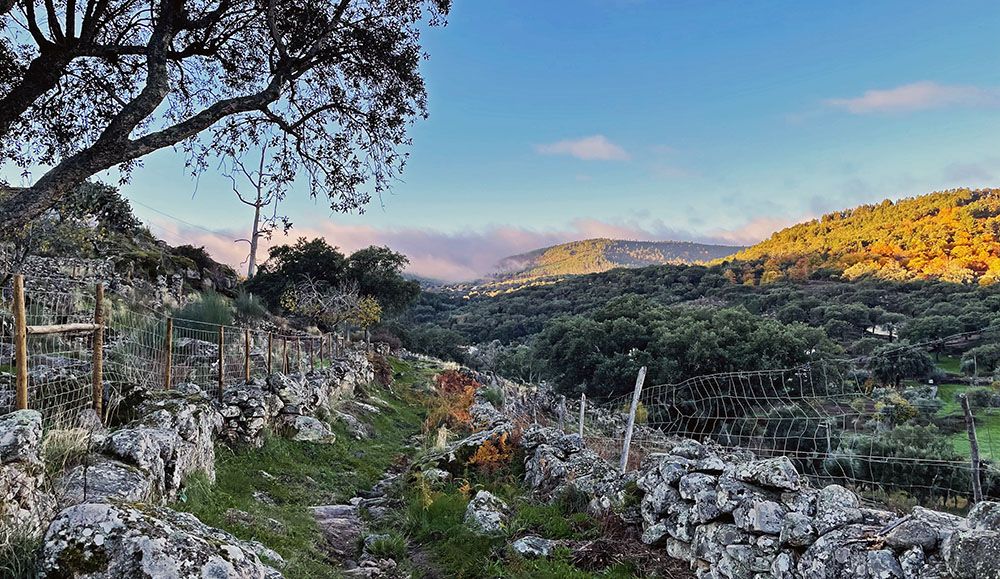
Ultimate views in the fortified town of Marvão in Serra de São Mamede
The picturesque, whitewashed town of Marvão is situated on top of an almost 1000-metre-high mountain peak. The great eye catcher of Marvão is the 13th century castle. This castle is located on the spot where there was already a castle in the 8th century. The owner of that castle was the Moorish Marwan, where the name Marvão comes from. He could not have chosen a better location for his castle: from the hilltop, you have an ultimate, wide view over the mountainous surroundings. Even beyond the Spanish border.
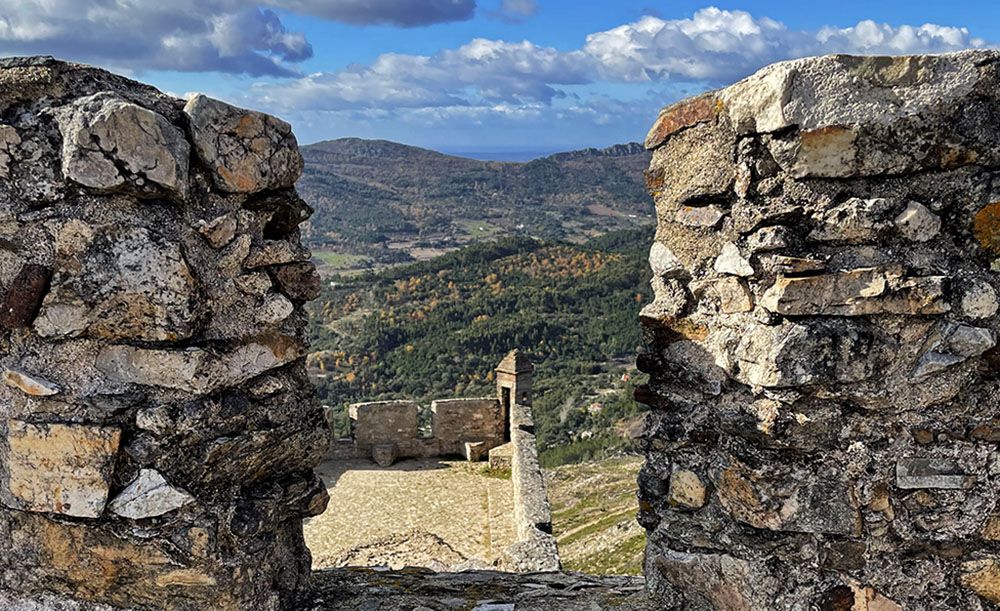
Moorish rule lasted almost five centuries until Marvão was recaptured by King Afonso I in the mid-12th century. Just over a hundred years later, the present-day Castelo de Marvão was built. This was at a time when the Moors were being pushed back and the border with Spain had to be secured. Marvão Castle itself is a fine example of a medieval castle from the time of the Crusades. The austere thick granite walls enclose part of the town and the high central keep.
Eight centuries later, we are walking around. Just like the previous days, it is clear blue and sunny. However, because of the time of year and the high altitude, it is quite chilly. But as soon as we enter the village through the medieval gateway, the temperature is forgotten. What an idyllic town Marvão is! Of course, the castle may not be missing from your visit. Still, we think that the town itself is more than worth the effort. And wherever you are, you will be treated to the most spectacular views. You can even see eagles flying in the depths!
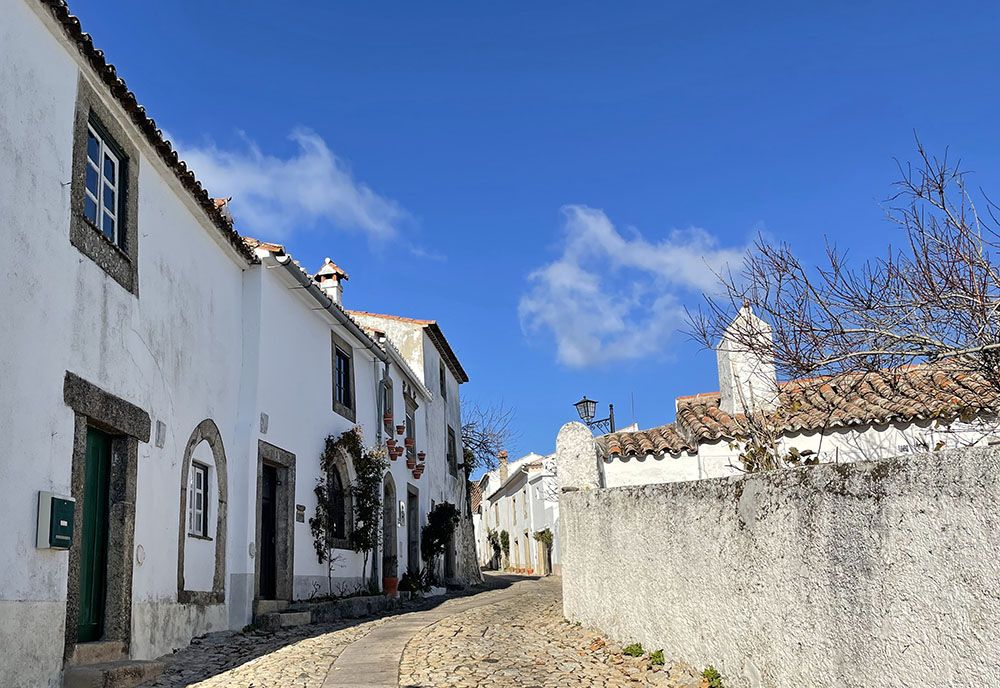
The nearby fortified towns of Alegrete and Castelo de Vide
There are more beautiful fortified towns in the area. Marvão may have the most beautiful views, the towns of Alegrete and Castelo de Vide are also worth a look.
The town of Castelo de Vide is an absolute gem in this part of the Alentejo. The old centre is one of the best-preserved medieval towns in Portugal. What the town may lack in noteworthy highlights, it more than makes up for in atmosphere and charm. In Castelo de Vide, you can easily spend a day without hunting for the sights. Enjoy the flower-lined cobblestone streets and the super relaxed squares. Don’t forget to visit the castle and especially the surrounding area full of menhirs.
A little further south is the peaceful town of Alegrete. This is a place that has been inhabited by mankind since ancient times. Alegrete is close to the border with Spain. Take your time to stroll through the quiet streets. Here you will find the typical white houses of the Alentejo where time seems to have stood still. The castle of Alegrete is more of a ruin, by the way. Yet you must have been here, if only because of the beautiful views.
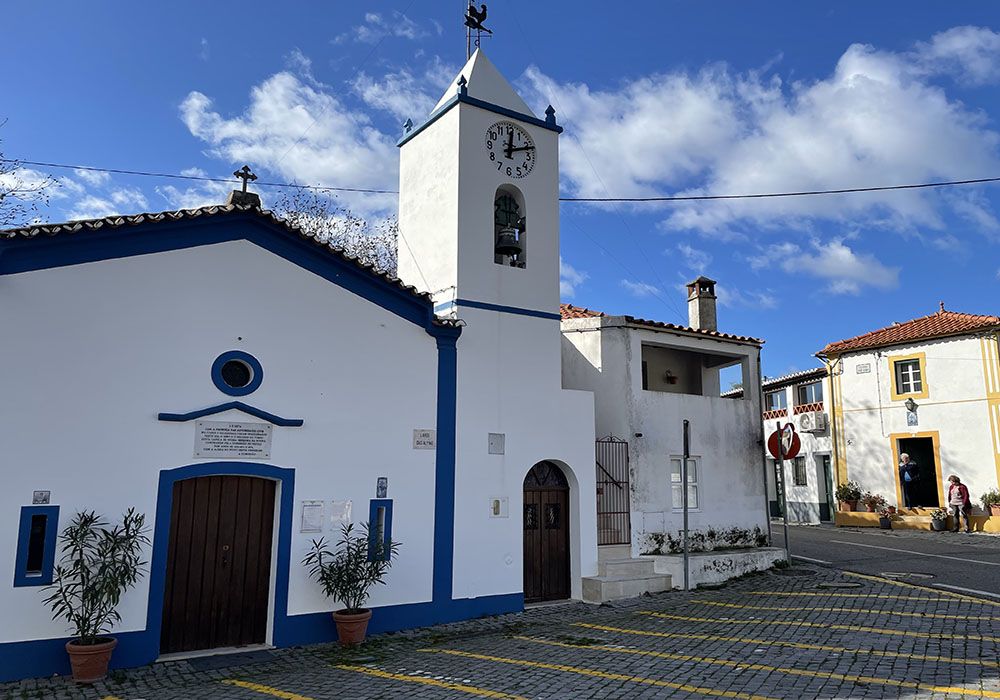
Portagem
For our lunch after visiting Marvão, we ended up in Portagem. We did not see much of the town itself. We did go for a short walk along the river. This is the place in the Alentejo where you should go during the summer months. When the temperature reaches 40 degrees, you can cool down here. Along the river there are many small river beaches. The water may be a bit cool, but it is still warmer than the Atlantic Ocean. During our visit, we did not swim there. However, we did have a very good lunch at Mil Homens!
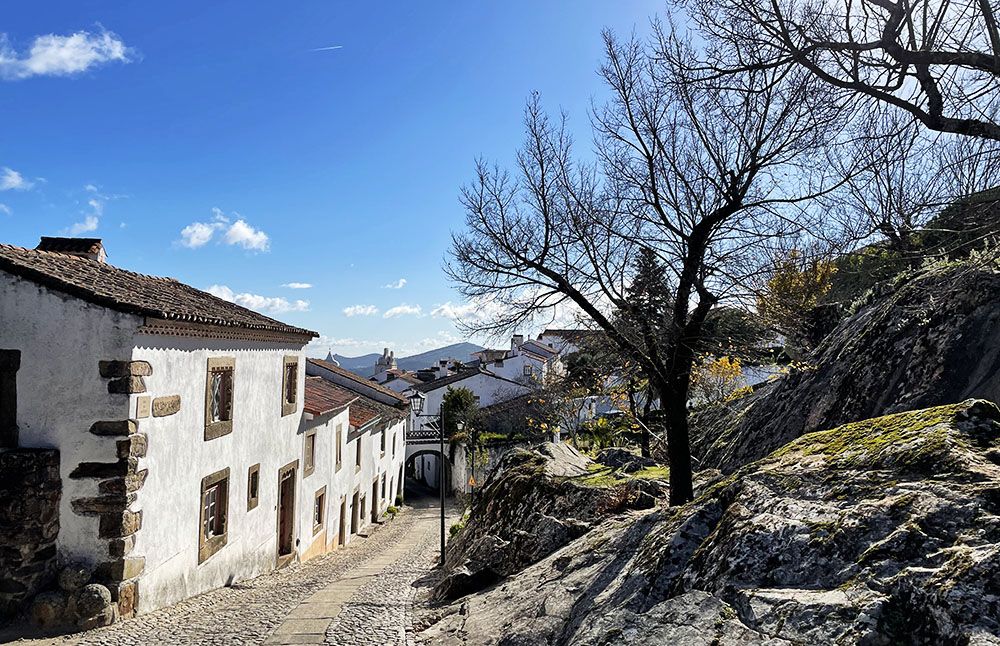
Practicalities for your visit to Serra de São Mamede Natural Park
In this higher part of the Alentejo, it is usually cooler. Nevertheless, it can get very hot in the summer. If you want to walk there, it is better to avoid the summer months. In winter, on the other hand, it can be cold. This is especially true in the mornings and evenings. The best time to travel for an active stay in the Serra de São Mamede is from the end of March to the beginning of June. And from mid-September until the beginning of November.
- Casas do Contrabando is located in the tiny village of Galegos. This small-scale, charming hotel is decorated very tastefully. It even has a swimming pool, but given the low temperatures at the end of November, we did not use it. The owner is very helpful and gave us tips for many walks. You can also go horse riding or cycling. The only downside was the lack of a reliable internet connection.
- Azeite de Marvão in Galegos. This simple but good accommodation is also owned by António, the owner of the olive oil factory. It is a bit cheaper and there is a good Wi-Fi connection.
- In Marvão, you have many accommodations, most of which have phenomenal views. An example is Pousada de Marvao. Bear in mind that a stay in this fortified town is less suitable if you want to make walks in the area. You will have to go down the mountain first, and then up again.
- For the ultimate Alentejo experience, dine in the cosy kitchen of the olive oil factory in Galegos. Please notify them in advance if you wish to do so.
- Mil Homens in Portagem. Here you will find delicious regional dishes and wines. Tip: go for the lamb stew!

